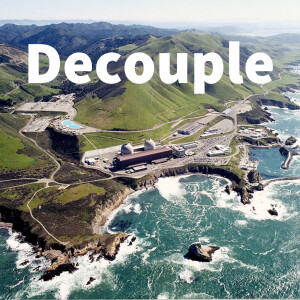
Uranium mining past, present and future feat. Jerry Grandey
 2021-05-30
2021-05-30
Download
Right click and do "save link as"
Its a basic truism but every material object that we use as humans that we did not farm or harvest from the land was mined. In the developed world we have offshored much of this mining activity and it is thus largely invisible to us. How do we decouple mining from its environmental impacts? Stringent regulation of environmental and labour practices. How does modern Uranium mining measure up?
With plans for an energy transition away from fossil fuels comes major mining implications. Replacing energy dense coal, oil and gas with dilute sources and storage mediums like wind, solar and batteries will lead to the biggest expansion of mining in world history according to Mark P Mills. Meanwhile the decarbonisation impact of uranium mining is uttlery overlooked.
Uranium has by far the lowest mining impact per unit of energy of any comparable fuel source. Several mines in Saskatchewan, Canada, that occupy a tiny land footprint produce enough Uranium to supply 20% of the world's nuclear power fleet which provides 4% of global primary energy. Thus Saskatchewans uranium mines can meet almost 1% of global primary energy demand.
Jerry Grandey was previously the CEO of Cameco Corporation, one of the world’s largest Uranium producers. In 2011, he was nominated for the Oslo Business for Peace Award in recognition of his efforts to facilitate the dismantling of 20,000 Russian warheads (The Megatons to Megawatts program), with the resulting uranium used in nuclear energy plants for the generation of electricity.
view more
More Episodes
Shorting the Grid feat. Meredith Angwin
 2020-09-18
2020-09-18
 2020-09-18
2020-09-18
Stand Up for Nuclear feat. Paris Ortiz Wines
 2020-09-04
2020-09-04
 2020-09-04
2020-09-04
Apocalypse Never Review feat. Leigh Phillips
 2020-07-27
2020-07-27
 2020-07-27
2020-07-27
Coming out as pro-nuclear feat. Zion Lights
 2020-07-06
2020-07-06
 2020-07-06
2020-07-06
What is to be done? feat. Jesse Freeston
 2020-05-27
2020-05-27
 2020-05-27
2020-05-27
01234567891011121314151617
Create your
podcast in
minutes
- Full-featured podcast site
- Unlimited storage and bandwidth
- Comprehensive podcast stats
- Distribute to Apple Podcasts, Spotify, and more
- Make money with your podcast
It is Free
- Privacy Policy
- Cookie Policy
- Terms of Use
- Consent Preferences
- Copyright © 2015-2024 Podbean.com




